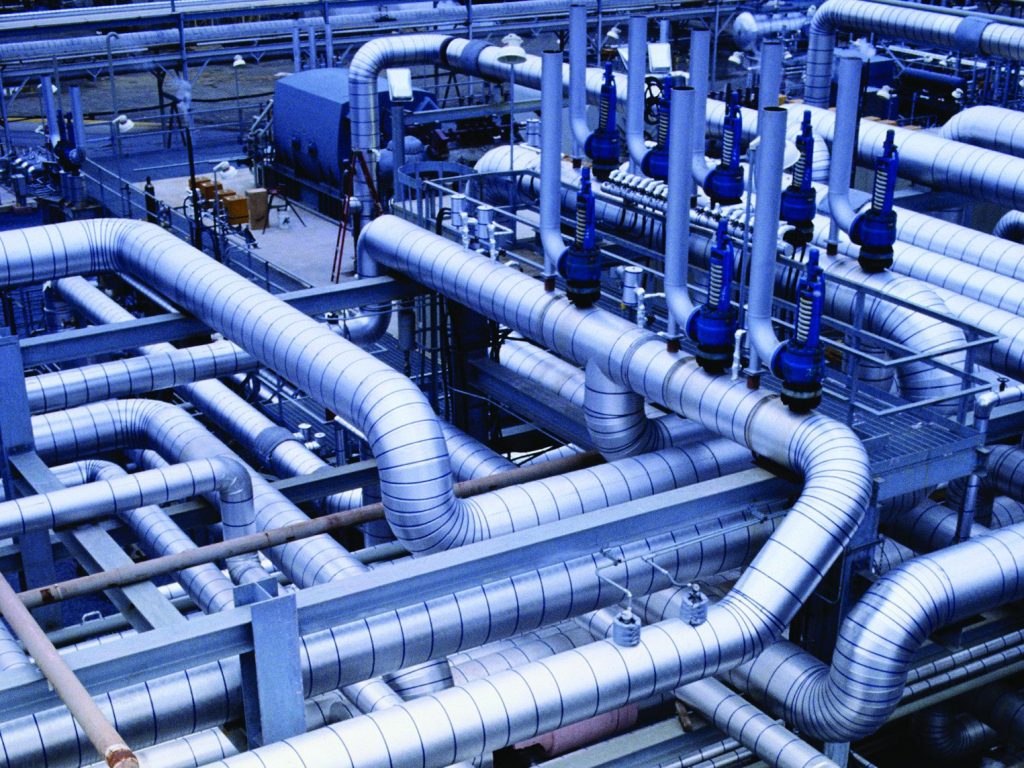
Forecasters predict that demand and consumption of oil and natural gas in the United States and in countries around the world will continue to grow in the next few years.[1],[2] In order to meet this demand, oil and gas companies will need to construct new pipelines that deliver fuel to more people in more places. At the same time, as existing pipelines age, they will need to be replaced in order to maximize the efficiency of energy delivery and protect public safety.
When constructing a new pipeline or replacing an old one, companies must consider a wide range of factors and conduct comprehensive tests; additionally, there are many different metals, non-metals, composites, and plastics available for use. In order to choose the best material for a given project, a company must consider the operating conditions and environment where the pipeline will be located, the composition of the fluid that is being delivered by the pipeline and the cost of the material. Constructability and maintainability of the pipeline are also critical factors.[3] Companies must also be sure that the pipeline meets regulatory standards in the location where it is constructed. Because such a wide range of factors are involved in the materials selection process, it can be a highly complex decision, which is why electronic lab notebooks (ELNs) can be a valuable asset in the selection of materials that ensure oil and gas pipeline integrity.
Collaboration in Materials Selection
In order to choose the right material to ensure the integrity of oil and gas pipelines, researchers in different departments need to be able to collaborate and communicate effectively. Because there are so many factors to consider, research data from multiple departments must be integrated. A chemical analysis lab examining fluid composition needs to be able to work with the engineers who are testing the maintainability of a pipeline constructed from a specific material. Together, they can find a material that can withstand the chemical properties of the fuel it is intended to transport and last for a long time with as little maintenance as possible.
At the same time, these scientists must work with financial analysts who evaluate the cost-effectiveness of a project so that they choose a material that doesn’t cost too much up front and that isn’t too expensive to transport to the construction project. One way to facilitate this collaboration is to use ELNs. When using ELNs, researchers from different departments have real-time access to each other’s data, so they can work together to optimize the factors that go into choosing the right material for a pipeline construction or replacement project.
ELNs can also facilitate collaboration between scientists in the lab and those in the field. As field scientists explore the conditions in a proposed pipeline location or evaluate an old pipeline that needs to be replaced, ELNs allow them to share their findings with lab scientists in real-time. That way, lab scientists can immediately start conducting tests that are specific to the environment of the pipeline. Lab scientists can also request that field scientists conduct specific tests on old pipes and receive immediate access to results. There’s no lag time for data transfer, so the overall research process can run more smoothly.
Organizational Capabilities of ELNs
Electronic lab notebooks make it much easier for scientists to access previous data. Rather than having to sort through stacks of lab notebooks and hundreds of pages of notes, researchers have past experimental results at their fingertips. Whether designing a new pipeline or replacing an old one, it is easy for scientists to find out which materials did—and did not—work in similar situations in the past. ELNs also help reduce the risk of data loss, making it less likely that scientists will need to duplicate tests that have already been conducted for certain materials.
The organizational capabilities of ELNs also help scientists ensure that the materials they choose comply with legal restrictions. As companies build more pipelines in more places in order to meet growing energy demands, they will need to keep track of the regulations in a growing number of countries, states and municipalities. Of course, these regulations must be considered alongside the scientific and financial factors that go into choosing a material. ELNs make it easier for scientists to keep track of the regulatory information for a specific area so that they don’t waste time considering or testing a material that does not comply with legal standards in the location where the pipeline will be built.
ELNs Improve Materials Identification Efficiency
Because electronic lab notebooks facilitate collaboration and improve organization, they can help improve the efficiency of the overall materials identification process. With faster information sharing, scientists working in different departments—or even on different continents—can communicate in real-time, so they don’t have to wait as long to receive another scientist’s test results before designing their next experiments. Researchers will also save time by not having to search through paper notebooks for old data or look up specific legal information for each material. Speeding up the materials selection process will make it easier for oil and gas companies to build new pipelines and replace old ones as quickly as possible in order to meet ever-growing global energy demands.
Electronic Lab Notebooks from BIOVIA can help oil and gas companies bolster oil and gas pipeline integrity by improving the materials selection process. The flexible features of this electronic notebook can help companies increase efficiency, cut costs and improve internal communication.
How can BIOVIA ELNs help your firm rise meet the challenges of delivering fuel to more people in more places?
